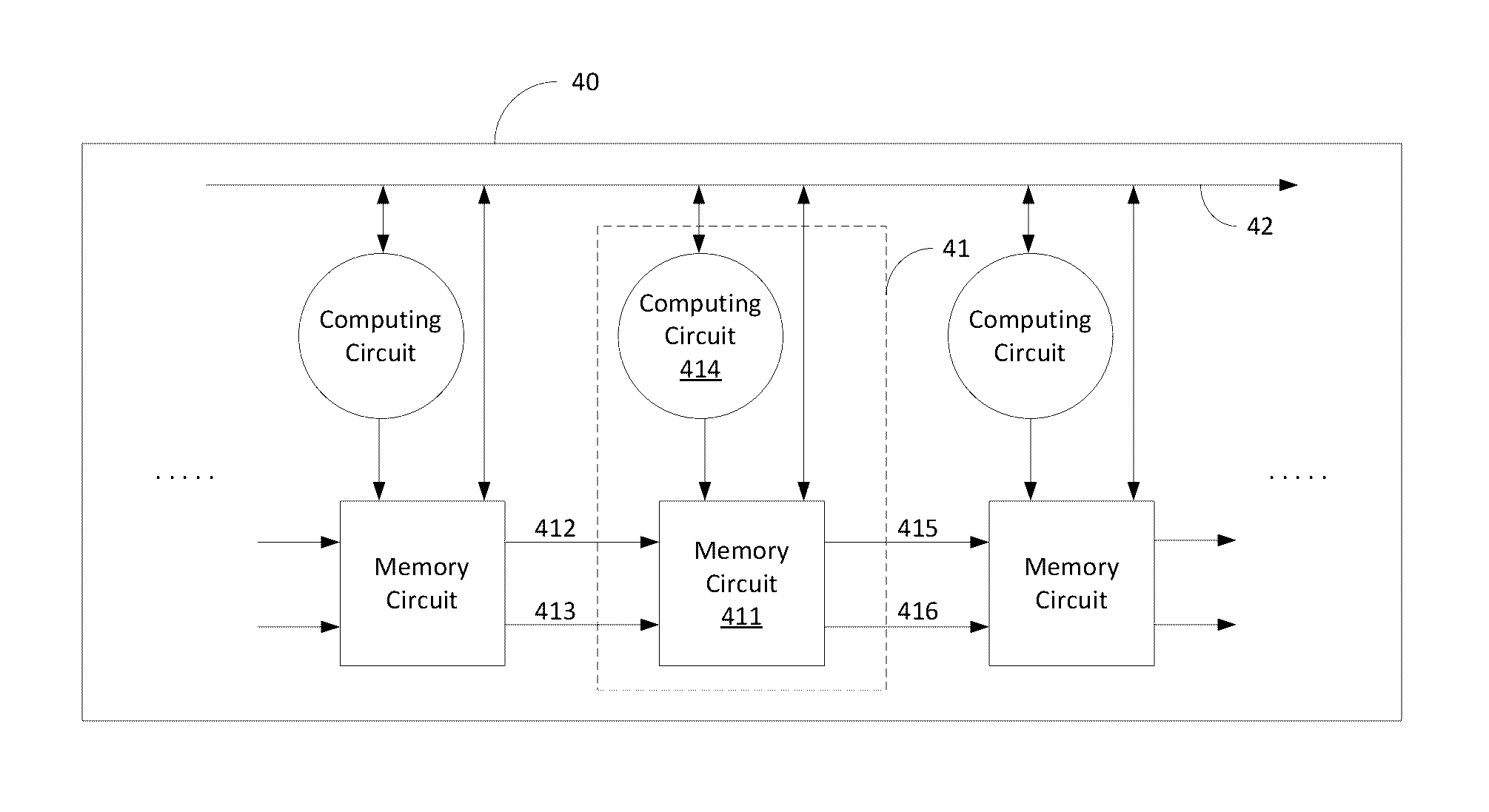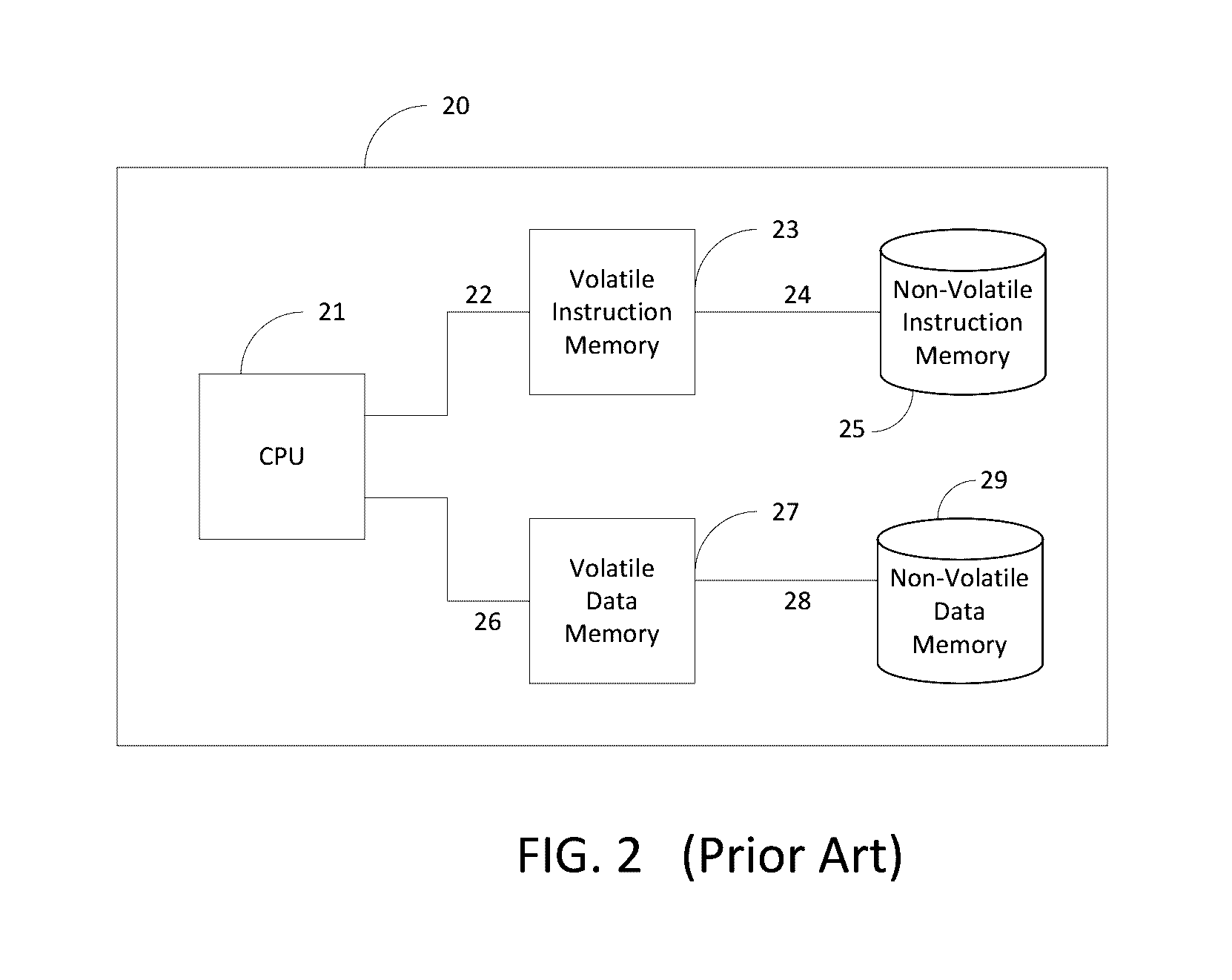Computing architecture for operating on sequential data
a computing architecture and sequential data technology, applied in computing, digital computers, instruments, etc., can solve the problems of complex operating system software, inability to optimize the above-described computer architecture to process generalized streams of data, and additional logistical complexity of the harvard architecture, etc., to achieve high speed and large-scale
- Summary
- Abstract
- Description
- Claims
- Application Information
AI Technical Summary
Benefits of technology
Problems solved by technology
Method used
Image
Examples
Embodiment Construction
[0010]Various embodiments of the present invention solve the above problems by providing a computer architecture in which the memory space is sequential, rather than flat. In these embodiments, a sequence of one or more instructions is defined for each memory location in a program, and program execution comprises passing data from one physical memory location to the next, sequentially, to be operated upon by the instructions at that location. The instructions at any given location may include branched logic, and the collection of logic (whether branched or not) in all memory locations comprises an entire algorithm for operating on a data stream. In this way, each datum in a data stream experiences the same algorithm.
[0011]Sequential memory locations are connected by both a data bus and a signal bus. The data bus carries the data from each memory location to the next, while the signal bus carries intermediate results of, or metadata pertaining to, the computation in progress. In this...
PUM
 Login to View More
Login to View More Abstract
Description
Claims
Application Information
 Login to View More
Login to View More - R&D
- Intellectual Property
- Life Sciences
- Materials
- Tech Scout
- Unparalleled Data Quality
- Higher Quality Content
- 60% Fewer Hallucinations
Browse by: Latest US Patents, China's latest patents, Technical Efficacy Thesaurus, Application Domain, Technology Topic, Popular Technical Reports.
© 2025 PatSnap. All rights reserved.Legal|Privacy policy|Modern Slavery Act Transparency Statement|Sitemap|About US| Contact US: help@patsnap.com



